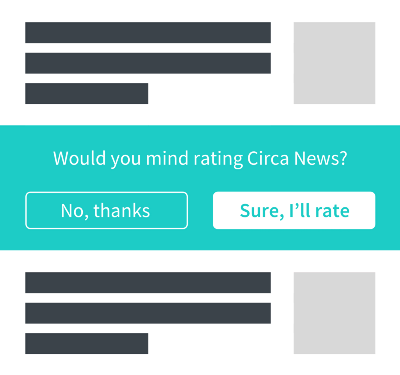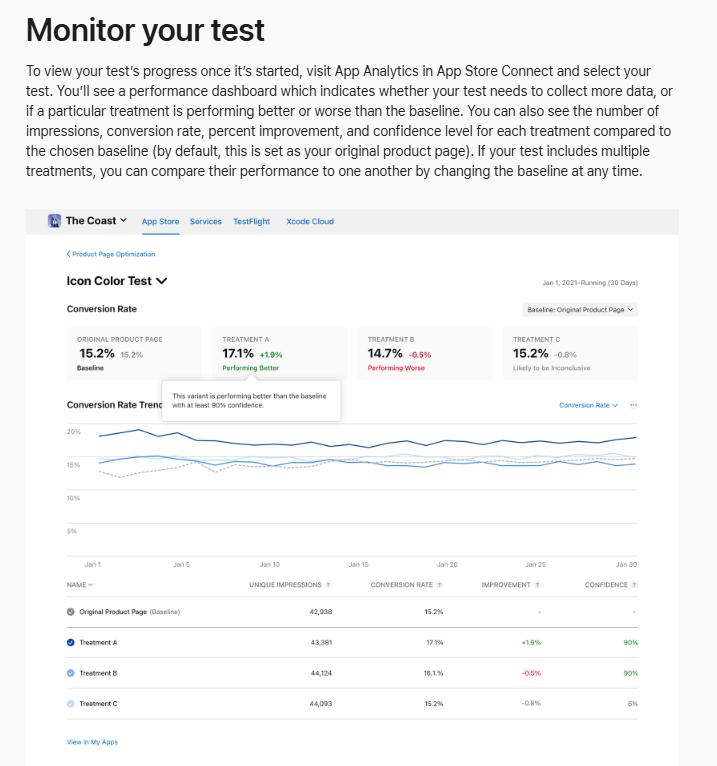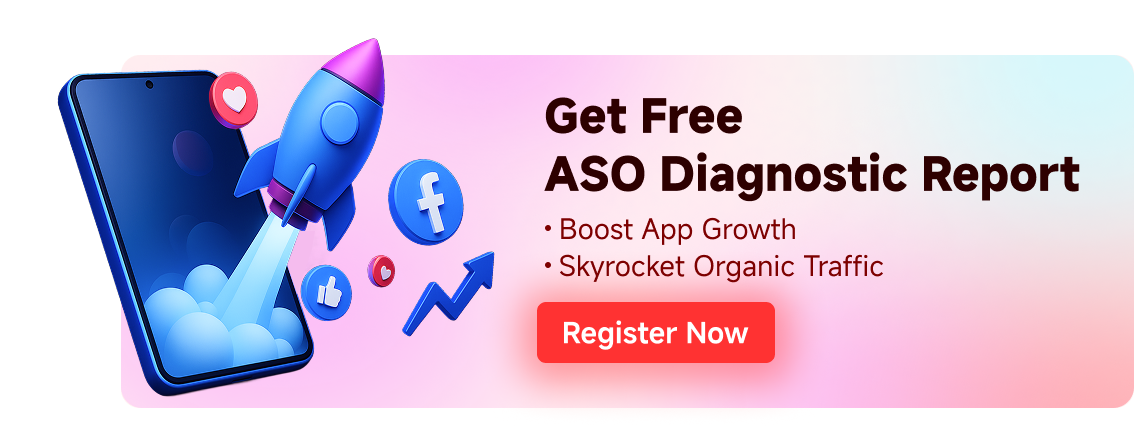Free consultation with ASO specialists
Doing ASO for the first time or have no idea how to carry out targeted optimization of your app?
We offer one-on-one customized services provided by app marketing specialists
Breaking out of ASO to do ASO: When optimization fails, how can product iteration be used to boost store rankings?
2025-09-15
aso
ASO Techniques
App Store Optimization
Keyword Optimization
App Store
Metadata Optimization
Review rating optimization
User acquisition
Introduction: When ASO Optimization Hits a Bottleneck
Competition for acquiring users in app stores is becoming increasingly fierce, making App Store Optimization (ASO) a crucial strategy for developers to enhance app visibility and downloads. However, as traditional ASO methods—such as keyword stuffing and optimizing icons and screenshots—gradually lose effectiveness or hit bottlenecks, we need to break free from conventional frameworks and seek new breakthroughs. This article will explore how product iteration can feed back into app store rankings, thereby reactivating growth when ASO optimization hits a standstill.
User pain points: Analysis of the reasons for optimization failure
Many developers, after investing significant effort into ASO optimization, find that the optimization effects gradually diminish or become ineffective. Here are some common user pain points and reasons why ASO may fail:
-
Keyword competition intensifies
Popular keywords are heavily contested, making it difficult for new apps to achieve rankings simply by piling up keywords. Even if they manage to secure a high ranking temporarily, they may quickly drop due to algorithm updates or competition from rivals. Over-reliance on keyword optimization while neglecting users' genuine intent will result in unsustainable optimization outcomes.
-
Metadata optimization space is saturated
The title, subtitle, description, and other fields of the app have limited lengths, and after repeated optimization, there is less and less room for improvement. When all possible keywords and highlights have been exhausted, further optimization will hardly lead to new breakthroughs.
-
Visual content fatigue
Users browse numerous app store pages every day, and aesthetic fatigue limits the improvement in click-through rates, even if icons and screenshots are exceptionally well-designed. Without a continuous sense of novelty, the marginal effect of visual optimization will diminish.
-
User retention and word-of-mouth issues
If the app itself doesn't provide a good user experience, even if you acquire downloads through ASO, users are likely to churn quickly or leave negative Reviews after installation, which will ultimately hurt the app's long-term Rankings. App store algorithms are increasingly focused on actual user behavior, such as retention rates and engagement metrics. These user behavior signals often go beyond the scope of traditional ASO and represent pain points that many developers tend to overlook.
-
Algorithm Updates and Policy Changes
The search algorithms and policies of app stores are adjusted from time to time, for exampleApple's restrictions on keyword fields, Google's considerations regarding app quality, and so on. These changes may render previously effective ASO strategies ineffective, requiring developers to continuously learn and adapt.
The pain points mentioned above indicate that optimizing solely from the app store page itself is no longer sufficient to solve all issues. When ASO hits a bottleneck, we need to step outside of ASO and take a broader look at ASO, focusing on the product strength and user experience of the app itself, and improving store rankings through product iterations.
Recognizing these pain points is just the first step. If you're unsure whether your app has already reached its full potential in terms of keyword coverage or metadata optimization, we can provide you with a free in-depth store page diagnosis. Our experts will help you identify any overlooked optimization blind spots and offer a clear roadmap for your subsequent strategy adjustments, whether it's ASO or product iteration.
Product Iteration Feeds Back to ASO: A New Path to Improve Store Rankings
The so-called "going beyond ASO to do ASO" means recognizing that improving app store rankings depends on enhancing the overall quality of the app and increasing user feedback. When metadata optimization can no longer yield significant results, improving the app itself through product iterations can, in turn, boost ASO effectiveness, creating a positive cycle.
-
Enhance user experience (UX)
User experience is the key factor determining the success or failure of an app. By continuously refining the app's interface, interaction, and performance through product iterations, we can make the app more user-friendly and smooth. A positive user experience will enhance user retention and activity levels, which in turn will influence the app store's ranking algorithm. When users are willing to use the app for extended periods and open it repeatedly, the app store will recognize it as a high-quality app, thereby granting it a higher weighting in search rankings.
-
Added new features and content
Regularly introduce new features and content to the app to keep it fresh and engaging. For example, add feature modules that users have been looking forward to, update popular content, or introduce interactive features like social sharing. Whenever the app has a major update, Apple's App Store and Google Play usually re-evaluate its relevance and activity, which may lead to an improvement in rankings. Additionally, new features can generate new keyword topics and enrich metadata content.
-
Enhance user engagement
By introducing incentive mechanisms and community features through product iterations, we can enhance user engagement and stickiness. For example, adding check-in features, achievement systems, leaderboards, or user community sections encourages users to frequently visit and use the app. Increased in-app activity will directly translate into metrics such as user retention and session duration, sending positive signals to app stores and thus helping improve rankings.
-
Optimize retention and conversion rates
Product iteration should not only focus on acquiring new users, but also on retaining existing ones. By analyzing user churn points, improving the onboarding process, beginner tutorials, and in-app prompts, we can reduce user churn rates. Higher retention rates mean more users will continue using the product and may recommend it to others, leading to organic word-of-mouth promotion and more downloads. Meanwhile, app store algorithms (especially for Google Play) also take into account factors such as user retention and uninstall rates when evaluating app quality.
-
Encourage users to give positive Ratings and share.
During product iterations, in-app review prompting and sharing features can be incorporated. For example, when users reach a certain milestone or express satisfaction with the app, a timely pop-up window can invite them to leave a review in the app store. By providing a positive experience, users will voluntarily give favorable Ratings, increasing the number of high Ratings and thus enhancing the app's Ratings and credibility. Additionally, a convenient sharing feature allows users to recommend the app to friends, resulting in additional downloads and exposure.

Through these product-level improvements, the overall performance of the app and its user reputation will both be enhanced. This improvement will, in turn, benefit ASO: app stores will grant higher rankings due to the improved quality of the app, and more users will proactively search for and download the app because of its excellent reputation, thus creating a positive cycle.
Successful iteration begins with deep insights into user feedback and store data. If you find that your app's ranking is affected by poor Ratings or negative Reviews, we can lend you a helping hand. With professionalReviews ManagementWith our user feedback collection service, we can not only help you maintain your app's reputation but also turn these valuable user voices into a source of inspiration for your next product iteration.
The Closed Loop of ASO and Product Iteration: A Continuous Cycle from Data to Optimization
To fully leverage the feedback loop of product iteration on ASO, it is necessary to establish a closed-loop workflow that closely integrates app store data feedback with product optimization.
-
Data Monitoring and Analysis
First, use the analytics tools provided by the app store (Product page optimization settings) and third-party ASO tools (such as UPUP), continuously monitor key app metrics, including search keyword rankings, download volumes, conversion rates, user Ratings and Reviews. Pay attention to which keywords drive traffic, which creatives have high conversion rates, and the main issues users raise in their Reviews.

-
Gain insights into user needs
Conduct an in-depth analysis of the collected data to gain insights into users' genuine needs and pain points. For example, if a particular keyword generates a large number of clicks but very few conversions, it may indicate that the app's landing page (store page) does not meet user expectations. If users frequently mention a missing feature or a bug in their Reviews, that should be the priority direction for product iteration.
-
Develop a product iteration plan
Based on the results of data analysis, develop a targeted product iteration plan. Prioritize addressing key issues that affect user experience and retention, while also considering adding features that can boost user engagement or meet new needs. Integrate ASO goals into product planning—for example, if you aim to improve rankings for certain keywords, strengthen relevant features or content in the product to highlight these selling points in the metadata.
-
Execute Iteration and Release
The development team carries out product iteration according to the plan and releases updates after thorough testing. When releasing, be sure to highlight the new important features or improvements in the update log, which not only helps existing users understand the update but may also attract the attention of app store editors, increasing the chances of being recommended.
-
Evaluation Feedback and Re-optimization
After the new product version goes live, return to the data monitoring phase to assess the impact of the iteration on app store metrics. Observe whether keyword rankings have improved, whether downloads and conversion rates have increased, and whether user Reviews are more positive. Compare the new data with that from before the iteration to analyze what went well and where there are shortcomings. Then, based on these new insights, adjust the ASO strategy again or proceed with the next round of product iteration.
Through this continuous cycle of data-optimization-data process, developers can create a closed loop of continuous improvement. In this closed loop, ASO provides direction for product iteration (telling us what users are looking for and what they care about), while product iteration in turn enhances ASO effectiveness (offering better content and experience to attract more users). The two mutually reinforce each other, enabling the app to maintain healthy growth in the highly competitive app stores.
Conclusion and Call to Action
As traditional ASO optimization methods gradually lose effectiveness, stepping outside of ASO itself and starting with product iteration is an effective strategy. By enhancing user experience, adding valuable features and content, and boosting user engagement, developers can significantly improve their app's performance in app stores, achieving a dual increase in store rankings and download numbers. This does not mean that ASO is no longer important; rather, it emphasizes the need for us to adopt a more comprehensive perspective when considering app growth: the foundation of app store rankings lies in the quality of the app itself and its reputation among users.
For developers and operators, now is the perfect time to start integrating product iteration with ASO. Don't let the optimization of app store pages become disconnected from the development of the app itself; instead, ensure they work together synergistically. By establishing a data-driven closed-loop workflow, continuously improving your product based on user feedback, and reflecting these advancements in your app store presence, your app will stand out in the highly competitive market.
The path is clear; what matters is taking action. Whether it's about the need for comprehensive improvementDownloads,Keyword Coverage and Rankings, or perhaps you'd like to drive download growth through a major product release—we all have mature experience and systematic solutions. Feel free to contact us to explore together how we can create a flywheel effect for your app, where product development and ASO work in synergy for mutual growth.
Related recommendations

